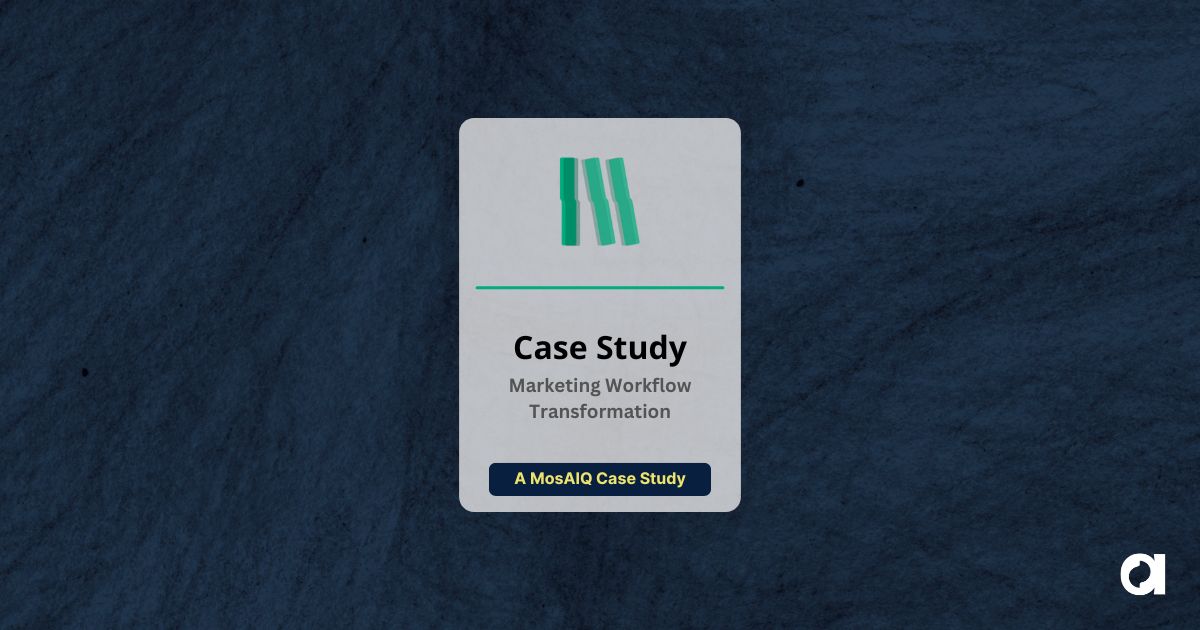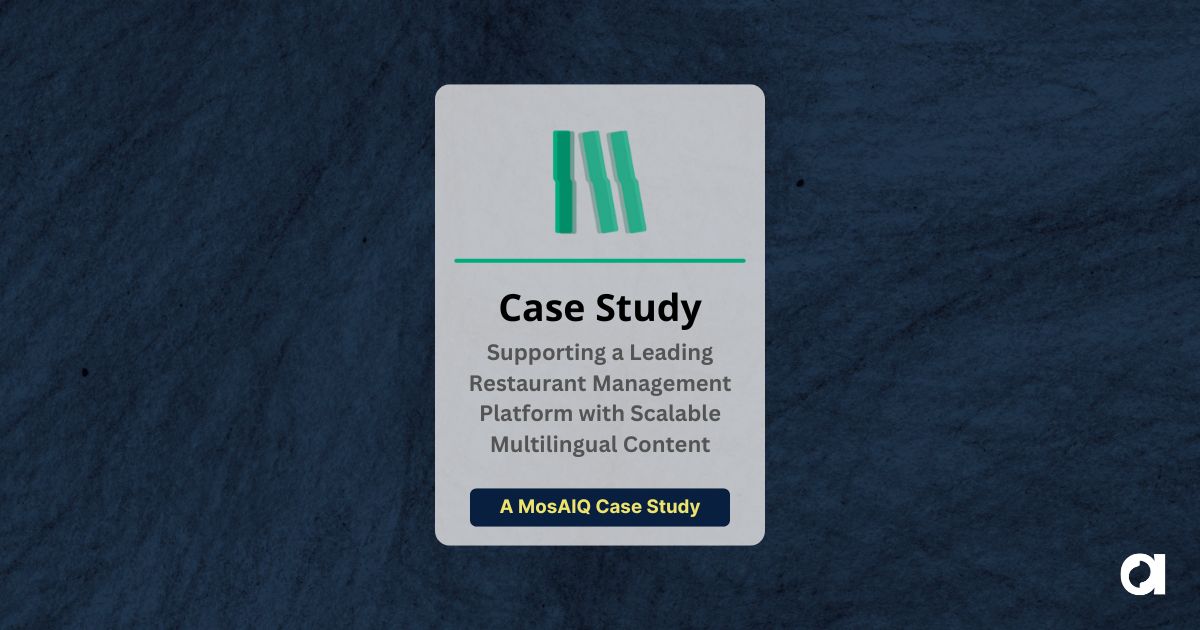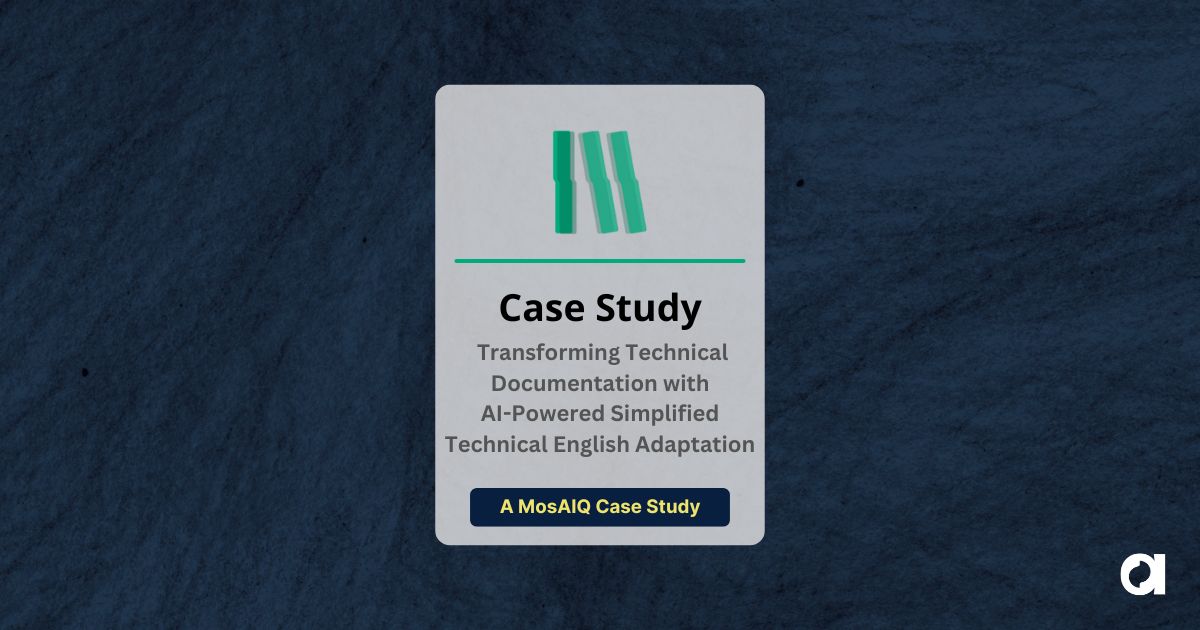There’s so much hype about AI right now that it can be hard to hear yourself think. We could tell you that AI is everywhere in the language industry, but the truth is that it’s everywhere, full stop.
Here’s a different way to look at it: if you think of AI as machine learning instead of artificial intelligence, it’s easy to see how often you already use it. It’s there with an overview on your Google search page or when you accept an autocorrect suggestion. Most people just don’t realize that AI is right in front of them. It’s not new, and it’s not unknowable. But sometimes it gets treated like both.
Some lean into the idea that AI is a black box, which is a process where you put information in and get a result without really knowing how it works. In these cases, there’s no oversight, transparency, or customization. General-purpose setups may produce fluent output. But fluent doesn’t mean right, and when translated content has consequences, that distinction matters.
At Argos, we take a more considerate approach. We build AI systems that reflect the language, structure, and oversight your content demands. Our large language model (LLM) workflows are shaped by real client data, real use cases, and real accountability. The result is content you can trace, refine, and trust.
Here’s what it takes to build a custom LLM for translation, and how we make sure it holds up under pressure.
Custom LLMs Are Built, Not Bought
It’s easy to plug a generic LLM into a translation workflow and call it innovation. But without customization, that model is just predicting the next word based on general training data. It hasn’t been shaped by the language your teams use or the standards your enterprise requires.
Creating a custom LLM starts with your content. We use your translation memories (TMs), termbases, and other reference materials to train the model on your tone, style, and language. This context helps the system learn how things are phrased for your field and your organization, not just how they’re phrased online.
But training alone doesn’t go far enough. We also design prompts that guide the LLM’s behavior, the structure of its responses, how it adapts for different audiences, and how it handles specific tasks like post-editing or quality assurance.
Instead of chasing fluency, the model works toward clarity, tone, and relevance. Its responses are shaped by structure, not just style.
Why Clean Input Matters So Much
Even the most advanced LLM is only as good as the data it learns from. In localization, that starts with the translation memory: a database of past translations that can be reused to support consistency in new translations.

Most TMs weren’t built for model training. They were built to make translation projects faster and deliver predictable quality. Over time, the quality of the TM declines because of duplicate entries and no irrelevant terminology. If that unclean translation memory is used for training, the model learns from it and these issues multiply across languages.
Our position is to treat TM cleanup as foundational. We combine the power of AI with automated checks and human linguistic review to standardize phrasing and flag inconsistencies before training starts. That work sets the tone for everything the LLM will learn. It helps preserve what matters and strips out what doesn’t to avoid repeating old mistakes.
Controlling the Output Starts with Better Prompts
Clean data is the foundation, but it’s not only about what goes into the LLM. We also control what comes out.
After training, our team creates detailed prompting instructions that shape the LLM’s output. These prompts tell the system what tones, structures, and content types to adapt to, whether that means staying close to the phrasing in a technical manual or shifting voice for patient-facing materials. The goal is more than getting the language right. It’s to make the translated content sound like you.
When you’re working with regulated, technical, or brand-sensitive content, this kind of control matters. It’s what helps the LLM use plain language for a health plan explainer, then switch to compliance-ready legal phrasing for the same organization.
Prompt design is based on your content and messaging. When the model’s behavior reflects that, the output conveys the tone and language that you and your audience expect. Once the model is creating content in the right voice, it still has to hold up to review.
Building Traceability and Accountability into Review
Review checks not only for quality, but also clarity and accountability. Many AI workflows skip this altogether or only check for one of these elements.
Instead of running a single post-editing pass, Argos uses a multi-agent validation process:
- The first agent reviews and flags the edit.
- Every proposed edit is reviewed by a second agent, who approves, revises, or challenges the suggestion.
- A third agent compares the results and mediates.
- All agents are required to explain the reasoning behind their changes.
- This rationale is shared with the final reviewer: a human linguist who evaluates and finalizes the content.
Some AI processes still treat review as a box to check, with little transparency. We treat review as part of the system. Handling it this way makes review repeatable, traceable, and accountable. It feeds information back into the LLM, helping it to learn and improve based on real decisions.
LLMs That Hold Their Shape
For a custom LLM to be useful in the long run, it has to deliver consistent results across content types, timelines, and teams. That means treating model development as a continuous lifecycle, not a one-time event.
We structure every stage of our AI work for continuity. Prompts evolve as the model adapts to new content, users, and quality goals. We feed TM updates and QA feedback directly into a model to influence behavior.
This structure supports continuous improvement, making output reliable even when the context changes.
LLMs Built to Manage Risk
In healthcare, law, and life sciences, every translated sentence has to hold up to scrutiny. It’s not enough for a model to sound fluent. It has to be accurate, explainable, and grounded in the right context from the start.

We build LLM systems that can handle that pressure. Every stage, whether it’s model setup, prompt design, or review, is structured to support clarity and defensibility. That’s what makes each decision traceable.
This is also where regulatory alignment matters. Our workflows comply with the principles in the EU AI Act and our ISO certifications: human oversight, documented behavior, and transparent review. These underpin everything our system does.
Learning from Use
AI systems don’t just improve through iteration. They improve by interacting with real people and real content.
We treat feedback as a core input. Edits from localization teams, QA tags, and customer comments are all captured and analyzed. They go beyond flagging problems by highlighting gaps in behavior, phrasing, or scope.
We use feedback to refine prompts, adjust LLM training materials, and align results with expectations. That can mean fine-tuning language for a new audience or reinforcing consistency to support quality.
Performance Under Pressure
The strongest test of any LLM is how well it performs when priorities shift, timelines compress, or content evolves. That’s the difference between an AI feature and a production-ready system.
Argos builds LLM workflows that hold their shape under pressure. Every layer, from training data to prompt design, review, and feedback, is structured to keep the system aligned with your goals now and over time.
If you’re planning a custom LLM deployment, we can help. Contact us to learn more about building a system shaped by your content, your priorities, and the people who use it.
 Argos Multilingual
5 min. read
Argos Multilingual
5 min. read
Most localization work is built on a basic, often flawed assumption: English comes first. Whether it’s documentation, marketing, or product content, English is often treated as the hub that everything else connects to. It’s the basis for termbases, translation memory alignment, review processes, and even pricing structures. Content flows from English into everything else. But […]

 Argos Multilingual
7 min. read
Argos Multilingual
7 min. read
Most companies already have a localization workflow. It might have been built during an early expansion push, or inherited from a vendor. In some cases, it came with the implementation of a translation management system, or TMS, sometimes without much training or customization. Whatever its origin, the workflow is probably still in place and still […]











